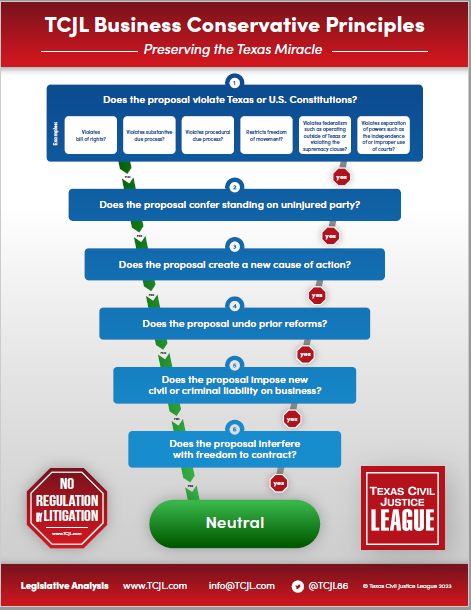
Justice David Gunn
In an opinion concurring with the Houston [1st] Court of Appeals’ denial of en banc review in a fraud case, newly appointed Justice David Gunn, formerly a pre-eminent appellate lawyer with the firm Beck Redden, has raised the question of whether a showing of common fraud without aggravating circumstances justifies the award of punitive damages under Chapter 41, CPRC. Huong Vo v. Morad Mekhail, d/b/a EZ Trust (No. 01-22-00630-CV; December 17, 2024)(copy of opinion attached below).
In 1995 the Texas Legislature enacted various reforms to the law of punitive damages. A key provision of the reforms was § 41.003(a), CPRC, which provides that to recover punitive damages a claimant must “prove[] by clear and convincing evidence that the harm with respect to which the claimant seeks recovery of exemplary damages results from: (1) fraud; (2) malice; or (3) gross negligence.” That section, as Justice Gunn observes, makes an exception, which is found in § 41.003(c). The exception reads: “If the claimant relies on a statute establishing a cause of action and authorizing exemplary damages in specified circumstances or in conjunction with a specified culpable mental state, exemplary damages may be awarded only if the claimant proves by clear and convincing evidence that the damages result from the specified circumstances or culpable mental state.
Section 41.003(c) comes into play, for example, in a statutory fraud case under § 27.01, Business & Commerce Code. This section applies to real estate and stock transactions and requires a claimant seeking punitive damages to prove that the person who committed the fraud described by the statute did so “with actual awareness of the falsity thereof,” which “may be inferred where objective manifestations indicate that a person acted with actual awareness.” § 27.01(c). The statute goes on to provide that a person who has “actual awareness” of “the falsity of a representation or promise made by another person” may likewise be liable for punitive damages if the person “fails to disclose the falsity of the representation or promise to the person defrauded” and “benefits from the false representation or promise.” § 27.01(d). Section 27.01 thus appears to require a showing of at least some “aggravating circumstance,” that is, “actual awareness.”
What are the elements of garden-variety common-law fraud? The Texas Supreme Court has stated many a time that “[a] common-law fraud claim requires ‘a material misrepresentation, which was false, and was either known to be false when made or was asserted without knowledge of its truth, which was intended to be acted upon, which was relied upon, and which caused injury.’” Formosa Plastics Corp. USA v. Presidio Eng’rs & Contractors, Inc., 960 S.W.2d 41, 47 (Tex. 1998) (quoting Sears, Roebuck & Co. v. Meadows, 877 S.W.2d 281, 282 (Tex. 1994)). Consequently, if we take the term “fraud” as it appears in § 41.003(a) as simple common-law fraud, an award of punitive damages could result from a merely negligent act of asserting the truth of a material fact without being sure that the assertion was true. If this is the case, it reveals a somewhat disturbing double standard in which it could be significantly easier to get punitive damages in a common-law fraud claim than in a statutory claim with a “higher” standard. That doesn’t make much sense to us.
Justice Gunn’s opinion queries whether the enactment of § 41.003 changed the previous common law rule that “barred fraud plaintiffs from obtaining punitive damages absent a showing of malice” (citations omitted). He points to a Fort Worth Court of Appeals opinion holding that it did and that fraud plaintiffs don’t need a malice finding “as a precondition to punitive damages.” Alahmad v. Abukhdair, No. 02-12-00084-CV, 2014 WL 2538740, at *13 (Tex. App.—Fort Worth June 5, 2014, pet. denied). But he also observes that a majority of jurisdictions require more than a “bare showing” of fraud, just as Texas has historically mandated. He reasons further that premising punitive damages on “clear and convincing evidence” of fraud doesn’t do anything. As he puts it, “[p]roving that the fraud took place by clear and convincing evidence does not show aggravation. It just shows greater certainty about the underlying tort. That additional certainty may well increase our confidence that the trial did not run amok; it can make us feel better about awarding compensatory damages; and it might play into a harmless error analysis in a case with trial error. But increased certainty does not logically imply aggravation….Treating fraud as its own aggravating circumstance seems inconsistent with section 41.003.”
What is the nature of the “inconsistency”? Again, Justice Gunn: “[R]eading Chapter 41 to expand availability of punitive damages seems at odds with the statute’s tort reform goals…. Punitive damages are supposed to be reserved for ‘exceptional cases.’ (citations omitted). A bare showing of wrongful conduct should not suffice. Rather, to lift the case above the run-of-the-mill case, the plaintiff has always had to further by proving an aggravating factor. (citation omitted).”
For our part, back in 1995 we didn’t think we did anything to make it easier to get punitive damages. We certainly didn’t think Chapter 41 abrogated the common-law rule to achieve that purpose. As we can see in Justice Gunn’s opinion, in the three decades since the enactment of the statute, there appears to have been only one appellate opinion on the issue. Justice Gunn does two things here. First, he invites defendants in common-law fraud cases to get the right cases to the intermediate courts of appeals so that SCOTX will have a reason to address it. Second, he alerts courts of appeals that simply rubber-stamping punitive damages awards in common-law fraud cases might be a problem that at least needs to be discussed.
